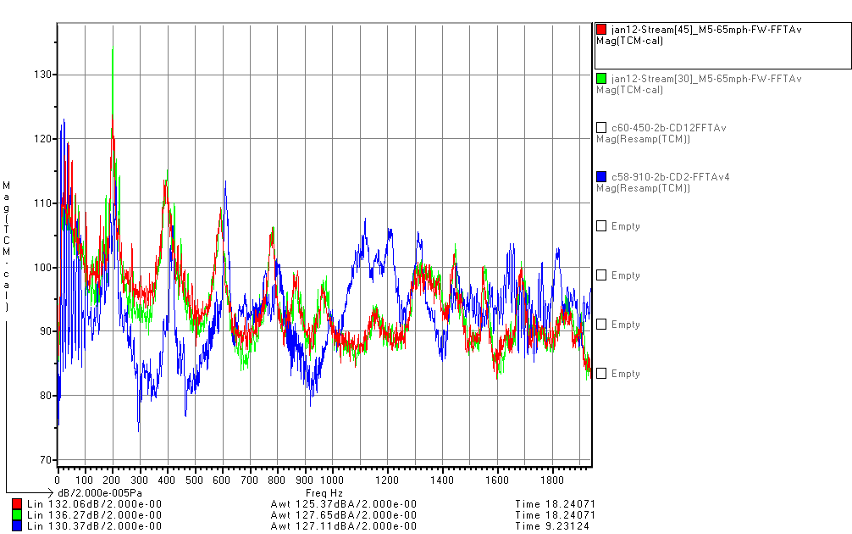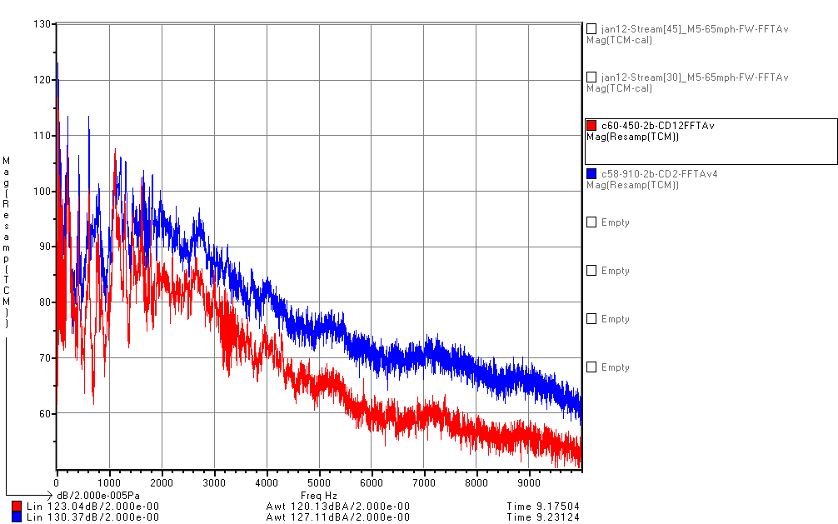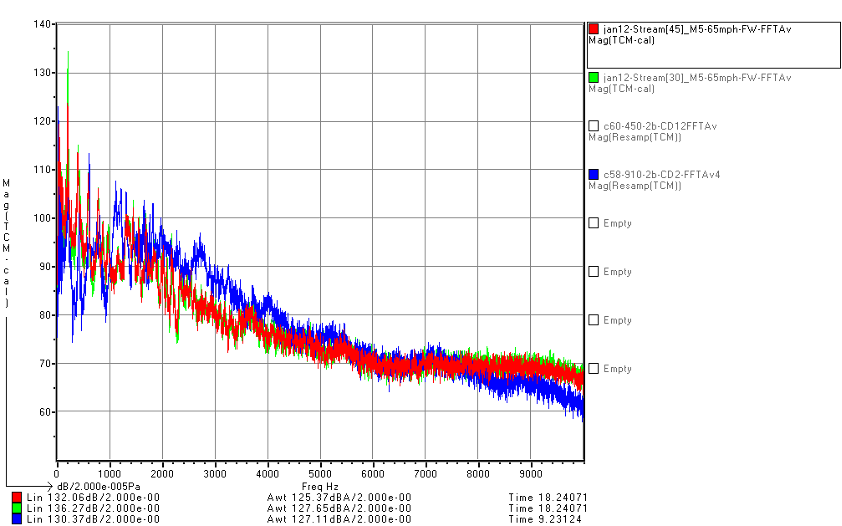A tire study has investigated if there can be a good agreement between rolling road and real road measurements
Part 1: recap
Driving at speeds <50mph (80km/h) revealed that for light throttle the driven and undriven tires generated essentially the same level of cavity resonance tones. On a 1:20 incline at 45mph (72km/h) the driven wheel’s PCR tone was some 4dB higher in level.
Click here to read part one.
Part 2: recap
Driving at 65-72mph (104-115km/h) on the M5 motorway the driven wheel’s tire generated 10+dBLin higher overall SPL than the undriven tire. This +10dB applies also to the peak level of the PCR tone making the driven axle of a vehicle the most likely source of PCR in the vehicle’s cabin by a factor of three. The caveat is that the transfer function for the truck for front and rear axles must be the same for this statement to be true. However, as the driven axle has more and stiffer mechanical linkages to the body it is likely that the degree of isolation between wheels and body will be less. Within the tires the driven wheels will generate +10dB higher PCR levels than the undriven wheels. Should the driven axle be less well isolated than the undriven axles then the driven wheels will certainly be the dominant driver of the cabin PCR tone.
The application of noise absorbing foam to the driven wheels should be evaluated first, acoustic foam may add weight and there is no benefit if applied to the undriven wheels.
Click here to read part two.
Comparing a rolling road and the road data
Access to a rolling road for the Nokian tire was not possible. A compromise was a comparison using a similar sized SUV tire (labelled C58), measured on a steel road wheel. This comparison showed some points of agreement and some significant differences (see Figure 12). The test cell and road data exhibit similar spectral shape and overall levels agree within 3dBA. However, at lower frequencies, below 1,400Hz, the agreement was poor (see Figure 13). The test cell general noise level, below 1,400Hz, was some 10dB lower than the road data.
This difference, at low frequencies, may be due to there being no surface texture on the steel road wheel injecting energy into the tire. With less energy input at these lower frequencies the levels of the cavity resonances were reduced by 10dB. In the road data (stream 30) a very high PCR response of 134dB was present, this was 10dB higher than the typical 124dB PCR response for the Nokian tire. Such an increase was not observed in any of the higher order cavity modes. This result serves as an example of how the PCR can sometimes become dominant and be audible in the vehicle’s cabin. The other cavity mode levels and the general spectral level were unaffected by whatever caused the PCR to increase by 10dB.

The dominance of the cavity resonance tones in the test cell (steel road wheel) data extends to 1,400Hz i.e. up to the seventh cavity tone. For most tires the tread block impact rate should begin to dominate the tire’s internal SPL in a band typically 100-200Hz wide at approximately 1kHz (65 blocks at 14Hz rotation rate = 910Hz). High SPLs associated with the tread pattern are always present and as in the case of the test cell measurement for tire C58 the tread-induced band was at a higher level than the road-induced levels recorded for the Nokian tire (see Figure 13).
Only the primary cavity resonance produces a resultant force at the axle and while the other resonances may couple to wheel/tire modes and therefore contribute to the radiated noise, they are not currently the focus of our attention. The C58 tire running steel road wheel did not generate a PCR tone as high in level as the road excited PCRs. However, the third order cavity resonance of C58 was 4dB higher than the third cavity resonance of the road excited Nokian tire. The wheel rotation rate harmonics, seen more strongly in the steel road wheel data, are due to the pressure pulse per rev as the TCM passes through the contact patch and not due to any wheel imbalance.
Two SUV mud and snow tires measured on the steel road wheel can exhibit significant differences (see Figure 14). The spectrum for the C60 tire (cyan) is 7dB lower than the C58 (blue) tire but with a similar spectral shape. N.B. Neither rolling road PCR is above 115dBLin while the road PCRs are >123dBLin.
The difference between these two SUV mud and snow tires was attributed to the tread pattern and the tread compound; the carcass construction was the same.

Discussion
The degree to which cavity resonances are excited, for any given tire, depends on the power being transmitted and energy input from the road surface texture and the tread pattern. The lack of a realistic road surface on most rolling road wheels means that test results from such smooth surfaced wheels will not stimulate real road PCR tone levels even if the powers being transmitted are representative. The on-road measurements indicate qualitatively that the road surface texture effectively spreads energy over the spectrum.
In the next instalment: Effect of road surface texture change and impacts
*Indicated speeds were +3mph (5km/h) more than the actual speed reported by GPRS navigation. All speeds reported in this note are indicated speeds. The TCM was always inside the Nokian tire, the tires moved from back axle on November 12 to front axle on January 12.


